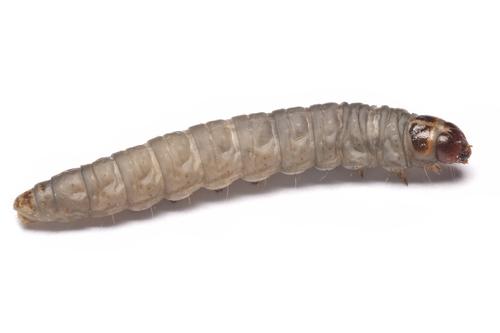In the 1967 blockbuster movie The Graduate, Dustin Hoffman's character Benjamin returns to his parents' house after college graduation and attends a party there that seems to be populated by mostly his parents' friends. One of them pulls Ben aside to impart a bit of wisdom for business success — in one word; he tells the recent graduate — plastics.
Although Benjamin didn't pay much attention to this revelation, apparently most of us did, because various kinds of plastic are everywhere in modern society — and one that is most obvious is the polyethylene (PE) bags we get at grocery stores. According to the EPA, these ubiquitous items are among the top ten sources of aquatic pollution, and one estimate is that a trillion are produced every year (that's twelve zeros). Society is probably not going to stop producing and using these oh-so-useful items, so we need a better way to dispose of them than the local landfill. Enter our possible savior — the caterpillar of the of the wax moth Galleria mellonella.
These caterpillars actually inhabit beehives, where they live on beeswax (thus the wax moth name) until they mature into moths. Purely by accident, one researcher discovered that putting these caterpillars into plastic bags was not a good way to retain them since she found that they made holes in the bags.
Dr. Federica Bertocchini and colleagues investigated this phenomenon. First, they simply left some of the caterpillars on PE sheet — and found that holes began to appear after about 40 minutes. Then, to determine if the worms were simply chewing the holes, they made a paste by grinding up the worms. This was then applied to sheets of PE and left for 14 hours. Again, the investigators found holes in the plastic and thus showed that some activity other than chewing was responsible for making the holes. Whether that was due to bacteria or enzymes in the caterpillars' digestive systems are two possibilities which deserve further investigation.
This is, of course, a very preliminary study which needs replication by other laboratories. But one can speculate that if these caterpillars are tiny plastic-eating entities, and we can determine how they do it, modern technology might amplify their prowess and allow us to use it at will and more efficiently than the worms do to cope with our overabundant supply of plastic bags.
Source: Current Biology




